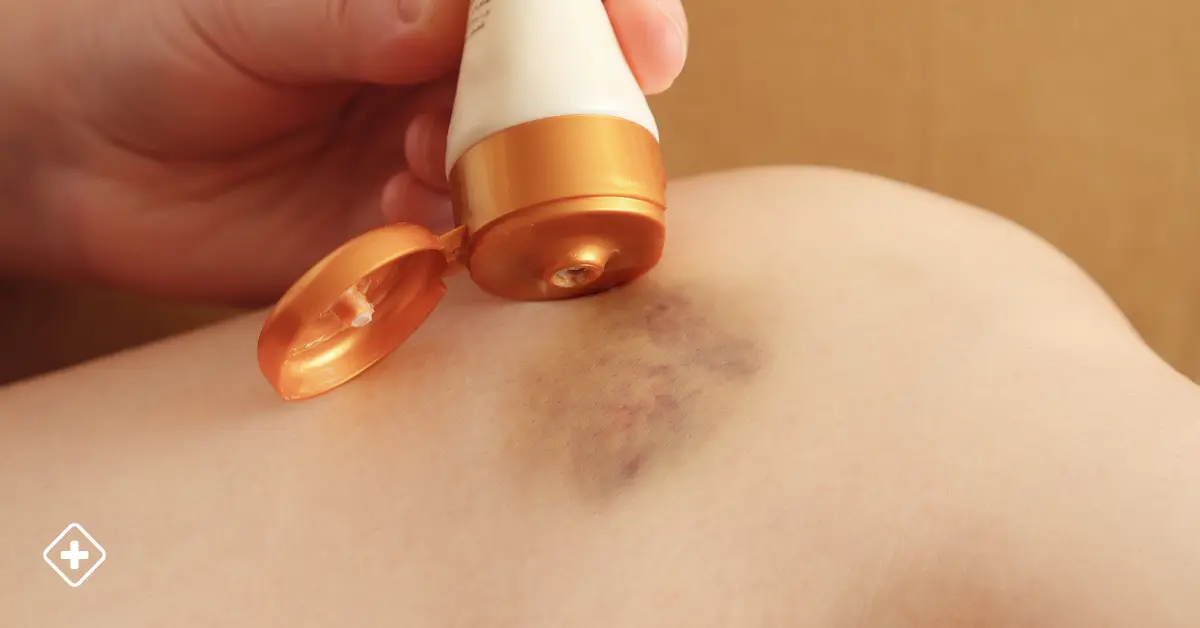
Anemia
Anemia often results in a weak condition and a feeling of tiredness. Anemia is characterized by an abnormally low number of healthy red blood cells in the blood. Red blood cells that carry oxygen around in your organism.

Anemia is an abnormally low level of hemoglobin in the blood. The value below which we speak of anemia varies according to age and gender. There are many causes of anemia, but iron deficiency is the most common.
What is anemia?
When you have anemia, you lack enough healthy red blood cells to carry adequate oxygen to your body's tissues.
To measure your hemoglobin, you will have to take a blood test in a Laboratory. The diagnosis of anemia is made when the hemoglobin level is below these threshold values:
-
14 grams per deciliter of blood (or g/dl) in newborns;
-
13 g/dl in adult men;
-
12 g/dl in adult women;
-
10.5 g/dl in pregnant women, from the second trimester of pregnancy.
Blood contains three different types of cells:
-
Red blood cells containing hemoglobin which is used to transport oxygen
-
White blood cells or leukocytes which defend the body against infections;
-
Platelets which help the blood to clot in case of bleeding
Millions of new red blood cells are produced every day to replace those that are normally destroyed. They are made by the bone marrow. In order to produce red blood cells, the body needs various elements from food: iron, vitamin B12 and vitamin B9 (or folate).
Symptoms of Anemia
Symptoms of anemia vary depending on its severity.
A minor anemia, with little decrease in hemoglobin, gives little or no symptoms. This is especially the case if it has settled in slowly, as the body has had time to get used to it.
If the anemia worsens, symptoms appear:
-
paleness, clearly visible on the inside of the eyelids, on the nails and lips
-
shortness of breath when exercising and then at rest
-
persistent fatigue
-
palpitations
-
dizziness, vertigo, weakness when getting up from a chair, feeling dizzy
-
headache
-
difficulty concentrating, remembering, reading
-
lack of motivation, energy
-
decreased sexual desire (decreased libido)
-
difficulties in carrying out normal activities
-
physical, emotional or psychological exhaustion
If the anemia is severe, sets in quickly, or lasts for a long time, it can have consequences:
- heart disease (worsening of heart disease, such as angina, heart failure);
- pulmonary disease (worsening of respiratory failure during bronchitis for example)
- complications during pregnancy (pregnant women may be more likely to have complications, such as preterm delivery.)
- death some inherited anemia, such as sickle cell anemia, can lead to several life-threatening complications.
Causes of Anemia
There are main types of anemia: central and peripheral anemia.
-
Central anemia: a bone marrow production defect
Central anemia is linked to insufficient production of red blood cells and hemoglobin by the bone marrow. This may be due to:
-
A lack of iron, vitamin B12 or vitamin B9. It is the most common cause of anemia.
Lack of Iron and B12 could be the result of an insufficient nutritional intake (It can for example happen in a vegetarian or vegan diet). The lack of vitamin B9 or folic acid most often results from an unbalanced diet with not enough green vegetables. B9 deficiencies are possible at the end of pregnancy due to the increased needs.
-
Chronic inflammatory disease: infections, cancers
-
Erythropoietin deficiency: this hormone that stimulates the bone marrow is normally made by the kidneys.
-
Poor functioning of the bone marrow: the bone tissue where red blood cells and hemoglobin are formed. This bone marrow failure can be caused by a toxic product or a drug. It can also occur because of cancer or during natural aging.
-
Peripheral Anemia: loss or destruction of red cells
The bone marrow normally makes red blood cells, but anemia is caused by either loss of blood or destruction of red blood cells.
The Loss of red blood cells through bleeding: A large or small loss but prolonged, of red blood cells is responsible for anemia.
The cause can be:
-
Gynecological: periods, uterine fibroid ...,
-
Digestive: gastrointestinal hemorrhages (peptic ulcer, ulcerative colitis, colon polyps, etc.),
-
Urological: bladder cancer for example.
The Abnormal destruction of red blood cells or hemolysis:
This is called hemolytic anemia, a rarer form of anemia.
Several causes are possible:
-
Autoimmune, meaning the body makes antibodies against its own red blood cells.
-
Genetic/hereditary: sickle cell disease, thalassemia.
Risk factors of Anemia
- A diet lacking in certain vitamins and minerals. A diet consistently low in iron, vitamin B-12 and folate increases your risk of anemia.
- Intestinal disorders: intestinal disorder that affects the absorption of nutrients in your small intestine (Crohn's disease, Celiac disease)
-
Menstruation. In general, women who haven't had menopause have a greater risk of iron deficiency anemia than do men and postmenopausal women. Menstruation causes the loss of red blood cells.
-
Chronic conditions: cancer, kidney failure, diabetes or another chronic condition
-
Family history
-
Other factors: infections, blood diseases, alcoholism, exposure to toxic chemicals, medication
-
Age. People over age 65 are at increased risk of anemia.
Treatment of anemia
Treatment for anemia depends on the type of anemia, the level of hemoglobin in the blood and the symptoms the patient has.
When the hemoglobin level is below 8 g/100 ml, anemia should be treated quickly.
-
Iron, Vitamins B12 or B9 deficiency: The doctor prescribes medicine containing Iron or Vitamins. An infusion may be necessary if the losses are severe or if the treatment is poorly supported.
-
Chronic inflammatory disease, chronic renal disease, digestive bleeding, gynecological bleeding. The disease must be treated to reduce the symptoms of inflammatory anemia. Medical injections to stimulate the bone marrow could be used in case of renal disease.
-
Autoimmune hemolytic anemia: Corticosteroid therapy may be indicated
-
Sickle cell anemia or thalassemia: There is no specific treatment for sickle cell anemia or thalassemia.
Prevention of Anemia
Many types of anemia can't be prevented. But you can avoid iron deficiency anemia and vitamin deficiency anemia by eating a diet-that includes a variety of vitamins and minerals:
-
Iron. Iron-rich foods include beef and other meats, beans, lentils, iron-fortified cereals, dark green leafy vegetables, and dried fruit.
-
Folate. This nutrient and its synthetic form folic acid, can be found in fruits and fruit juices, dark green leafy vegetables, green peas, kidney beans, peanuts, and enriched grain products, such as bread, cereal, pasta and rice.
-
Vitamin B-12. Foods rich in vitamin B-12 include meat, dairy products, and fortified cereal and soy products.
-
Vitamin C. Foods rich in vitamin C include citrus fruits and juices, peppers, broccoli, tomatoes, melons and strawberries. These also help increase iron absorption.
Don’t hesitate to consult an hematologist.
¿When do you have to see a doctor?
Make your appointment with the doctor in case of presenting any of the mentioned symptoms.
The Specialist in hematology or Internal Medicine is in charge of treating this type of disease; they will be in charge of making a diagnosis to identify the cause of the symptoms and identify the severity of the condition.
When consulting your Internal Medicine Specialist, try to keep a record of your pain with a detailed description of the symptoms, duration, and what you think triggered them. Also, mention any medications you are taking.
BlueNetHospitals - Hospital Los Cabos
BlueNet Hospitals

Hematomas
Hematomas can occur for a variety of reasons, with injuries and trauma being the most common
Non-Hodgkin's lymphomas
Non-Hodgkin's lymphomas are a type of cancer that impacts the lymphatic system.
Leukemia
Leukemia cannot be completely prevented, but there are measures that can be taken to reduce the risk of developing it.
- Do You Need an Appointment with a Specialist?
- call us
- write us
- let's talk




